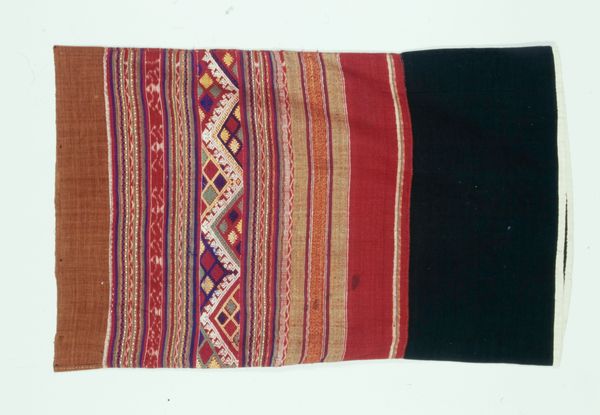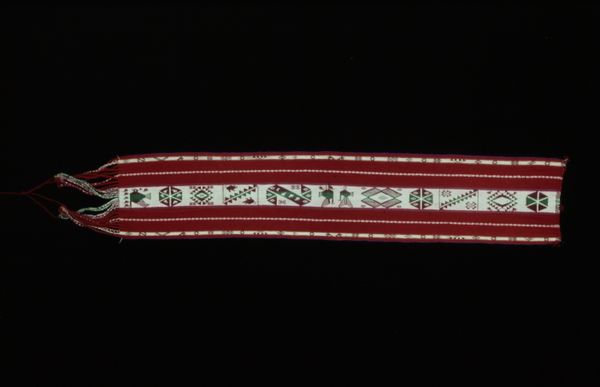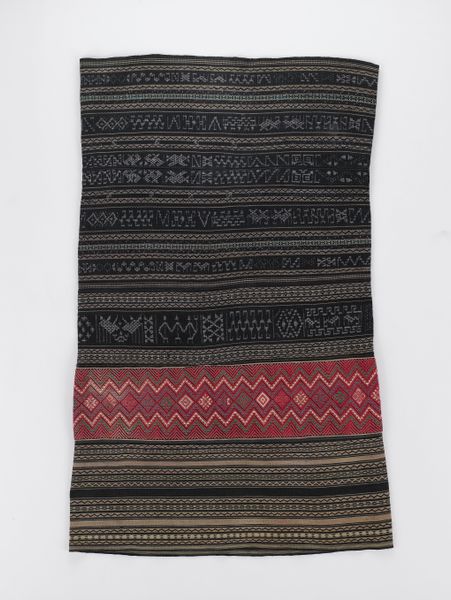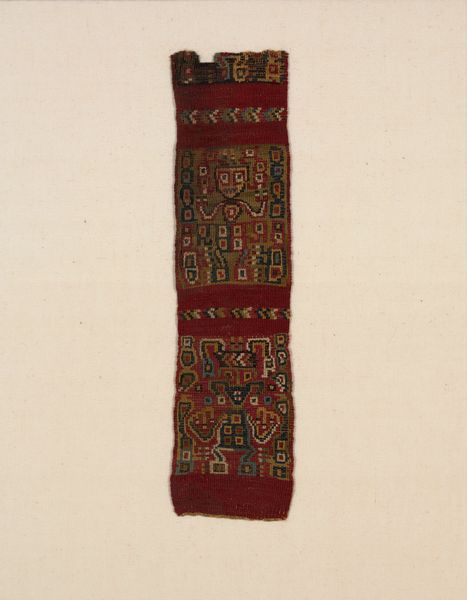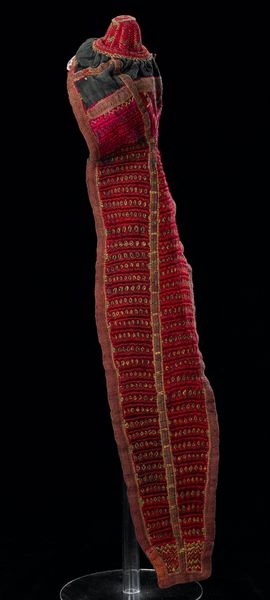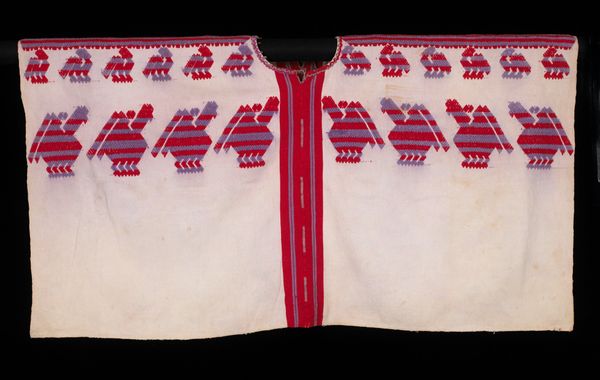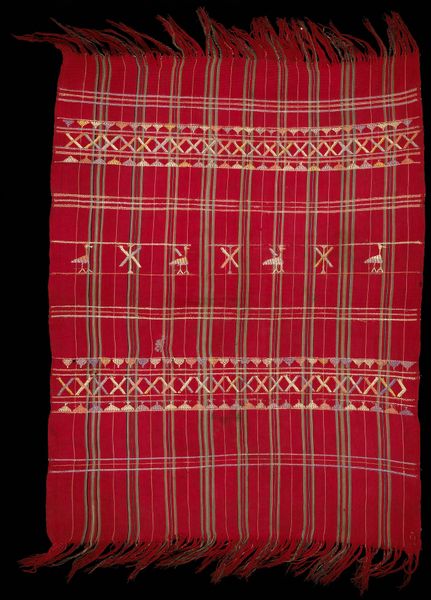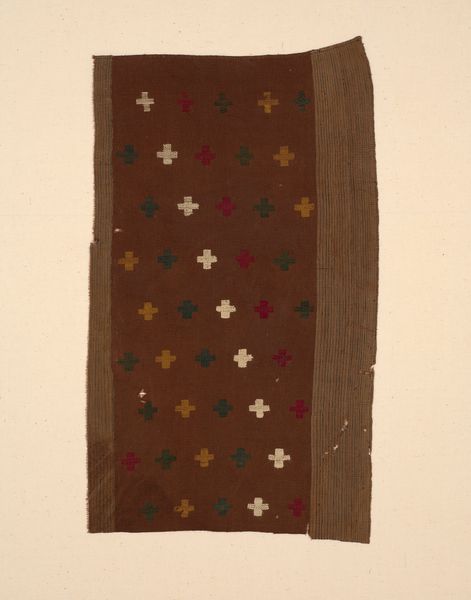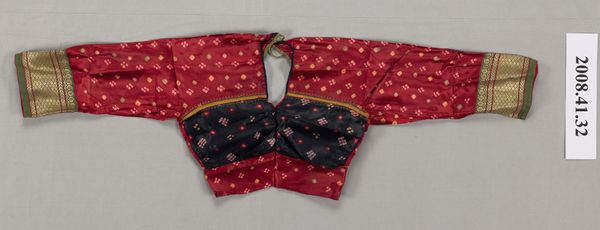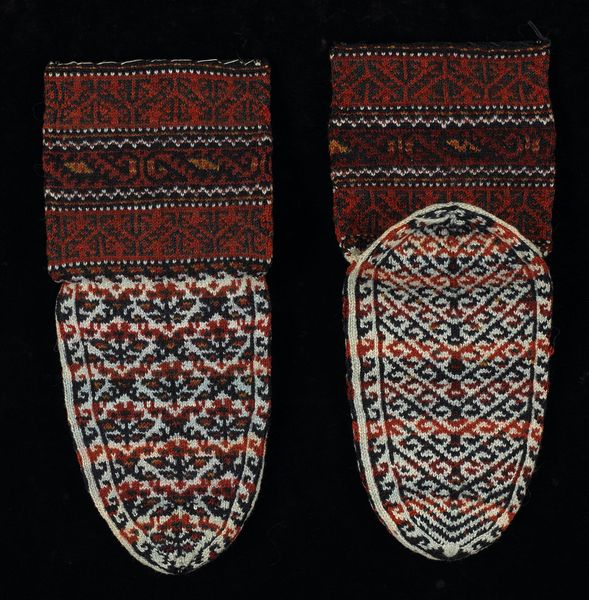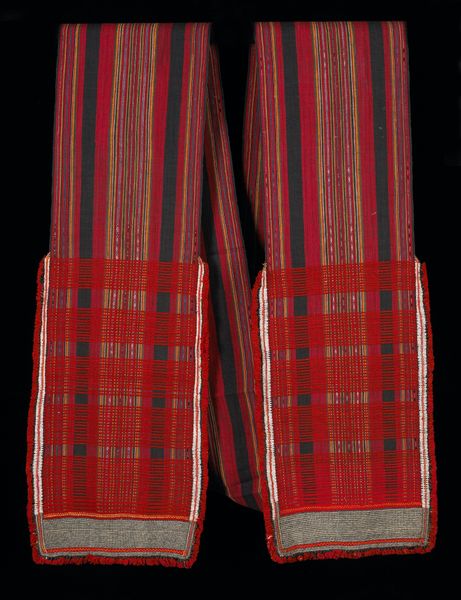
fibre-art, weaving, textile
#
fibre-art
#
weaving
#
textile
#
hand-embroidered
#
embroidery
#
geometric
#
indigenous-americas
Dimensions: 20 x 10 in. (50.8 x 25.4 cm) (including fringe)
Copyright: Public Domain
Editor: Here we have a "Chullo," a hat made by the Quechua people, sometime in the 20th century. It's textile art, primarily wool, with some stunning embroidery. It strikes me as both practical and celebratory. What stories do you see woven into it? Curator: The Chullo is far more than just a hat; it's a profound statement of cultural identity and resistance. Its existence within museum walls also raises critical questions about cultural appropriation versus appreciation. The vibrant colours and intricate patterns aren't merely decorative. How do you interpret these repeated motifs? Do they seem purely aesthetic, or could they hold deeper symbolic weight related to Quechua cosmology or social structure? Editor: I hadn't considered the issue of appropriation. I see repeated geometric patterns with stylized floral elements and maybe animal motifs? Perhaps representing nature and community? Curator: Exactly. These motifs likely communicate information about the wearer's status, origin, or even marital eligibility. More broadly, it demonstrates the ingenuity and sophisticated knowledge systems embedded in Indigenous cultures. The question then becomes: how do we engage with this object in a way that respects and amplifies Quechua voices, acknowledging the ongoing struggles against colonial legacies? Editor: So it's a dialogue between the visual artistry and its complex social context? Curator: Precisely! Objects like this Chullo serve as tangible reminders of the resilience, adaptation, and enduring creativity of communities often marginalized in dominant narratives. By viewing art through this lens, we create a platform for conversations that are vital to addressing systemic inequality. Editor: It really makes you consider the responsibility we have when encountering art from different cultures. Thanks, this has broadened my view. Curator: Mine as well. Considering these nuances definitely enriches the experience beyond the aesthetic appreciation.
Comments
minneapolisinstituteofart almost 2 years ago
⋮
Taquile Island is located on the Peruvian side of Lake Titicaca. Taquile’s textile arts are well regarded and were declared Masterpieces of the Oral and Intangible Heritage of Humanity by UNESCO in 2005. Male Taquileños knit hats, belts, and other items, while women spin and weave. These hats are customarily worn by men and communicate marital status; single men wear white and married men red.
Join the conversation
Join millions of artists and users on Artera today and experience the ultimate creative platform.
